Final year project
Dementia and independence [Read more]
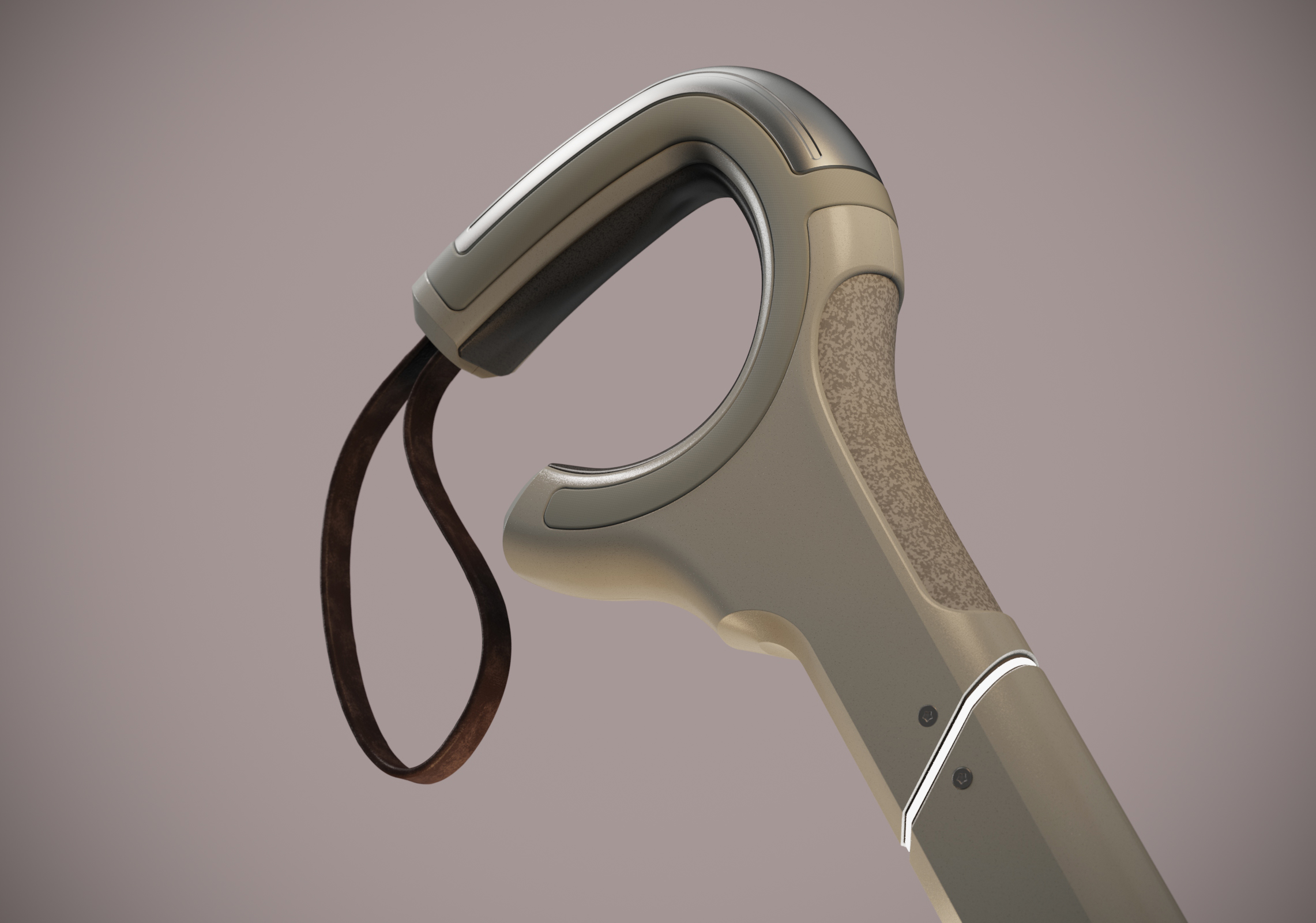
AIDE walking stick
AIDE is a smart mobility aid for people with dementia. AIDE uses machine learning algorithms to build up a map of the person with dementia's behaviours without the need for surveillance and invasive home adaptation. AIDE can also deliver reminders to the user to help reorient them when in a confused episode
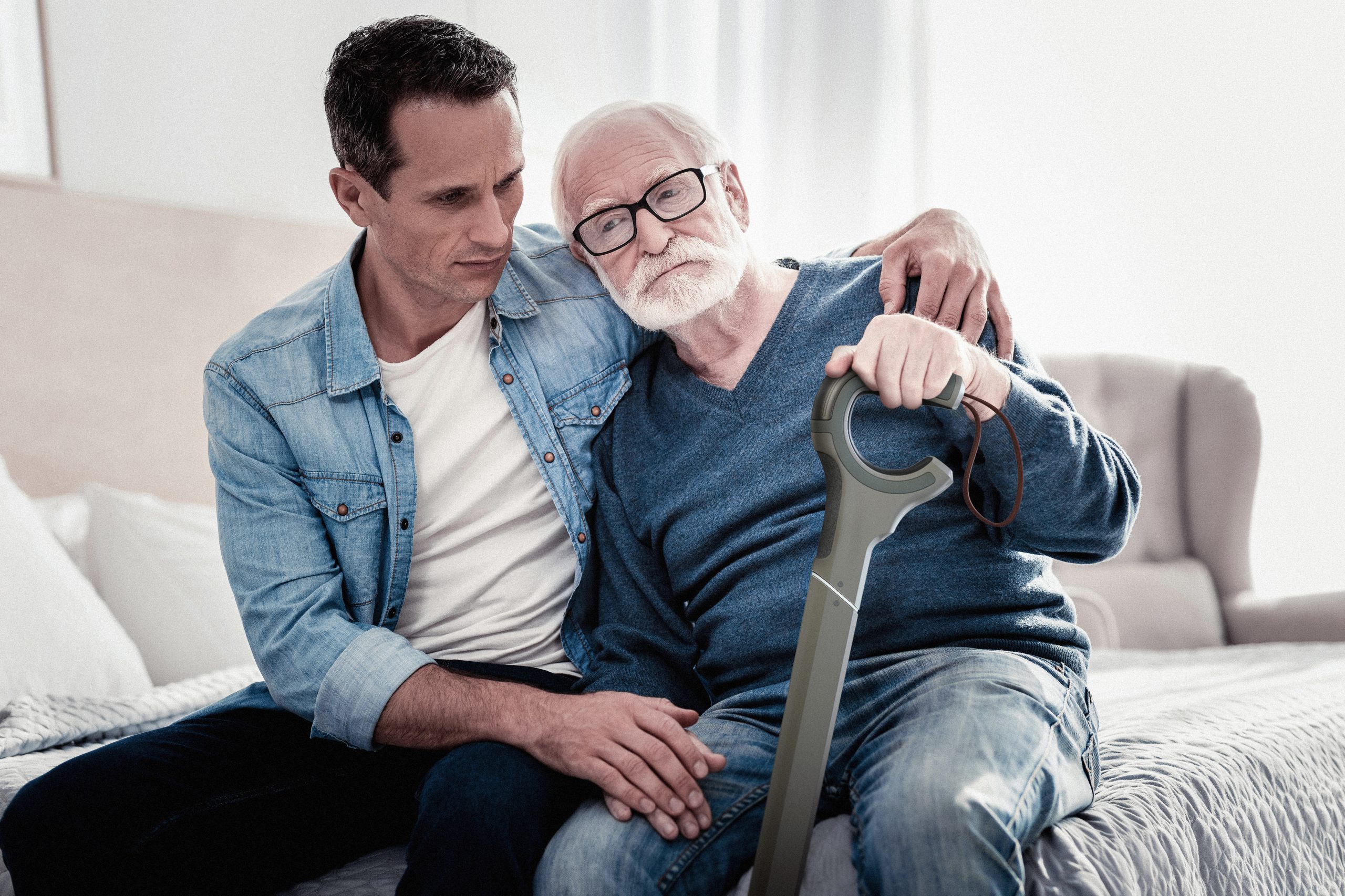

AIDE in use
AIDE is designed such that the person with dementia doesn't need any knowledge retention for the functionality to be accessed. A mobility aid is appropriate because the use of a walking stick is an engrained behaviour in many elderly people and its use is necessitated by physical impairment, which will develop alongside the cognitive symptoms of dementia
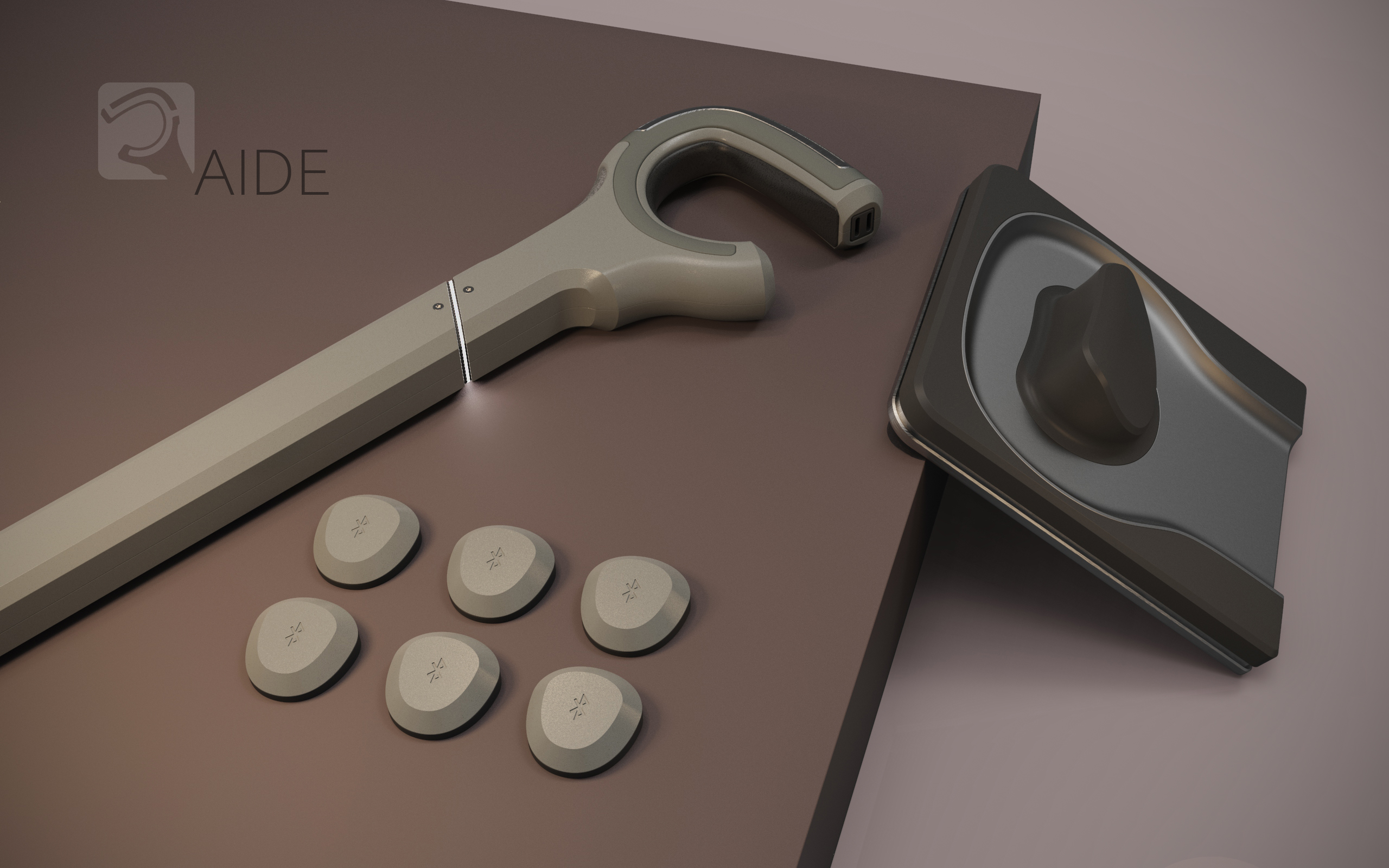

AIDE and peripherals
AIDE comes with a wall-mounted wireless charger and a set of Bluetooth beacons that are placed around the house at the entrance to each room. As the user moves around the house the stick communicates with the beacons. This data is run through pattern recognition software to build up a behaviour map - if unusual behaviour is detected, the care network is alerted through the app
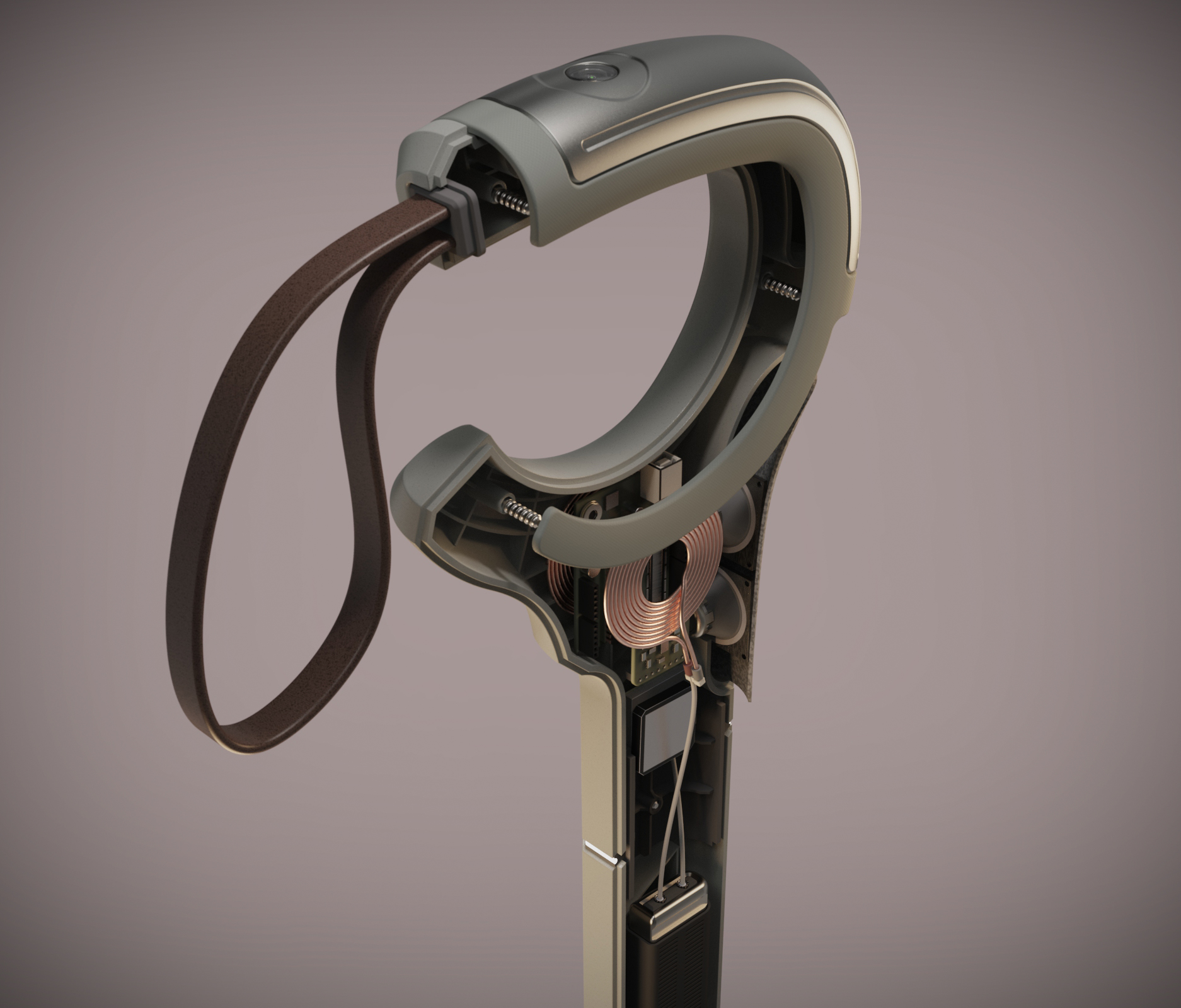

Internal components
AIDE's internal components are shown here by removing several parts of the outer casing. The components are held in place by internal ribbing moulded into the housing
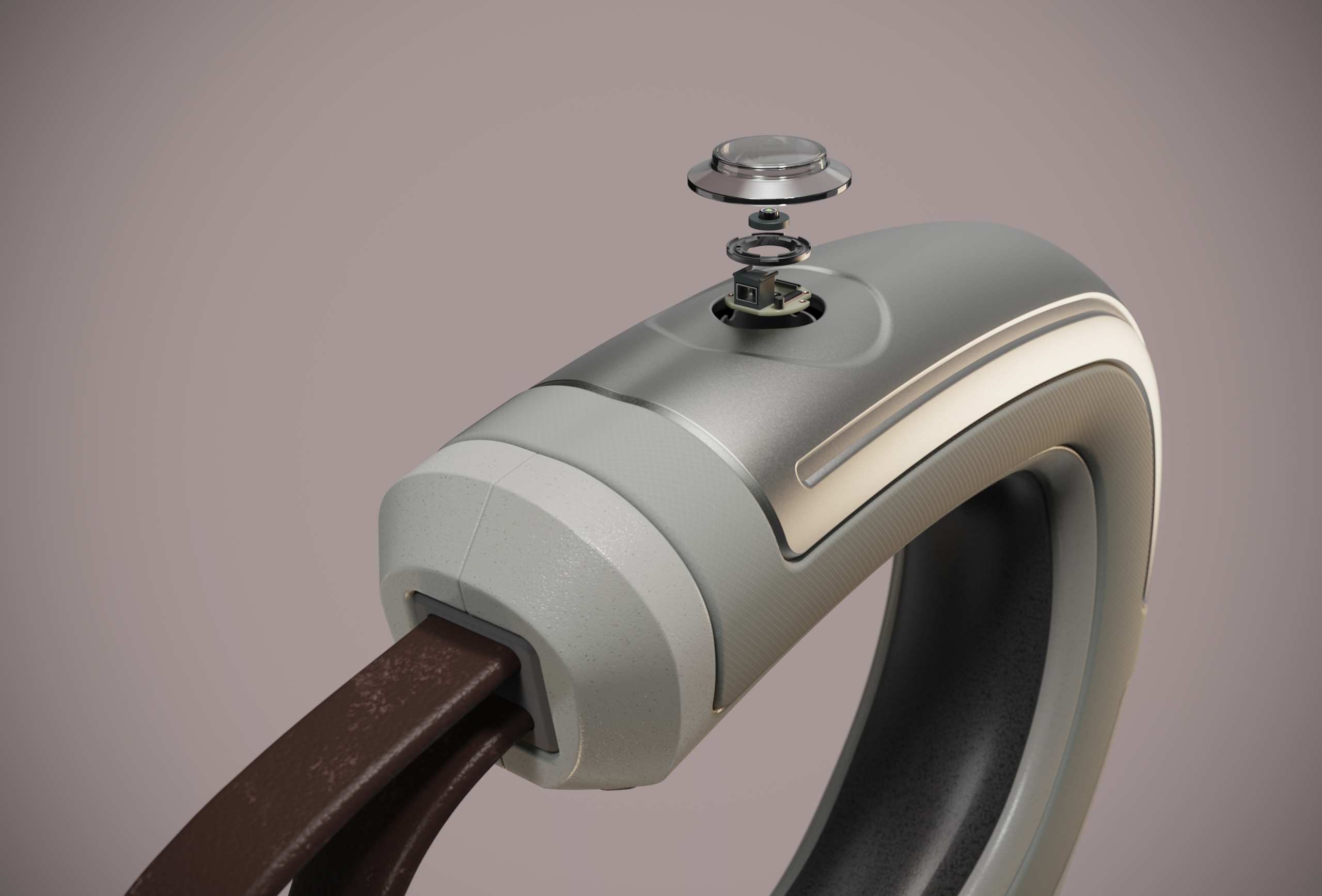

Optical heart rate monitor
AIDE measures and tracks the heart rate of the user through an optical heart rate monitor in the handle that is positioned to align with the main arteries in the hand. The materials that the hand comes into contact with have been selected in order to provide the user with tactile feedback when interacting with the device
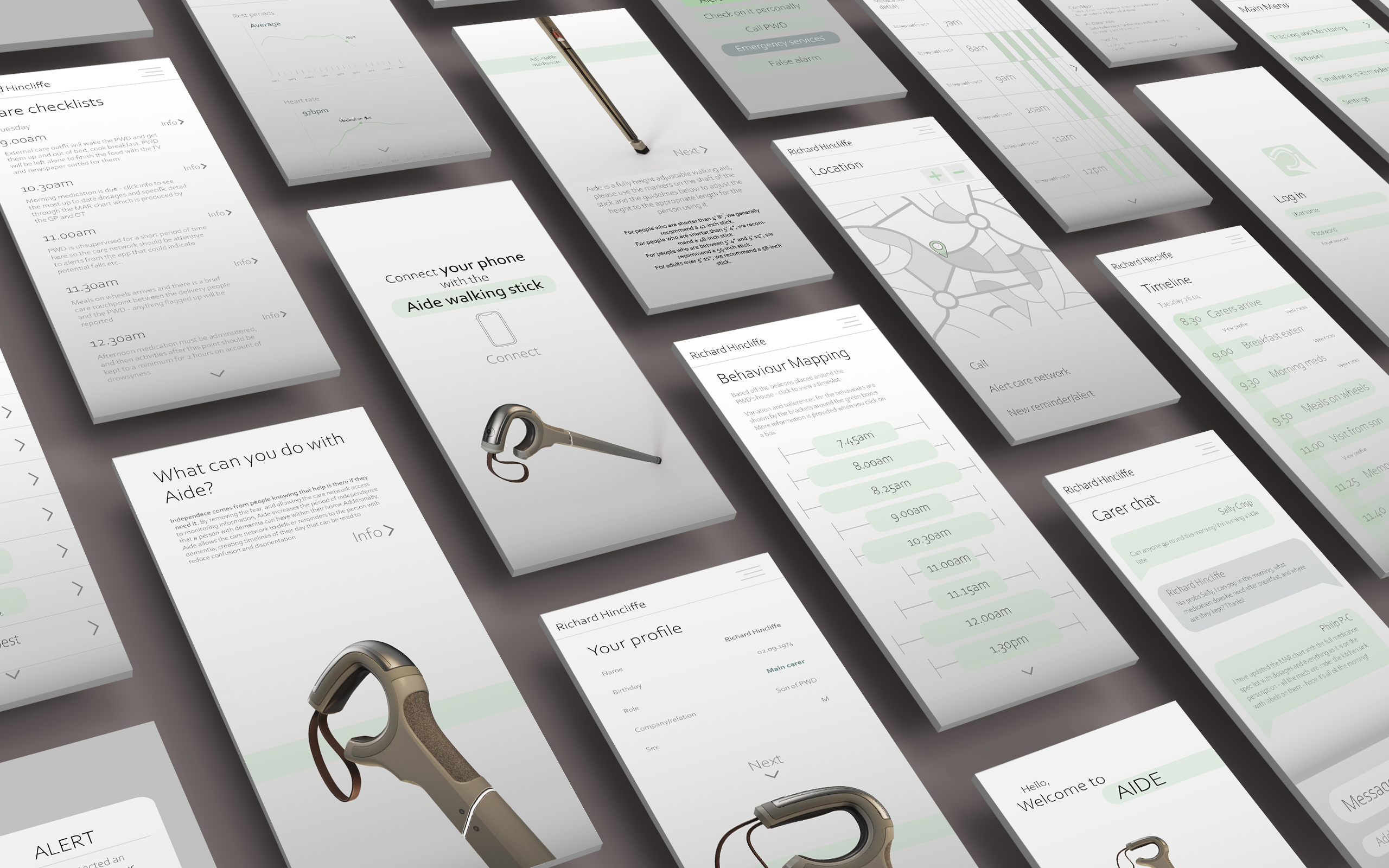

AIDE user interface
The UI that supports AIDE aims to connect the care network with a view to creating a more cohesive and efficient approach to the care of the person with dementia. Care routines, checklists and MAR charts can be accessed here to reduce the administration involved in having multiple people taking on care responsibilities.
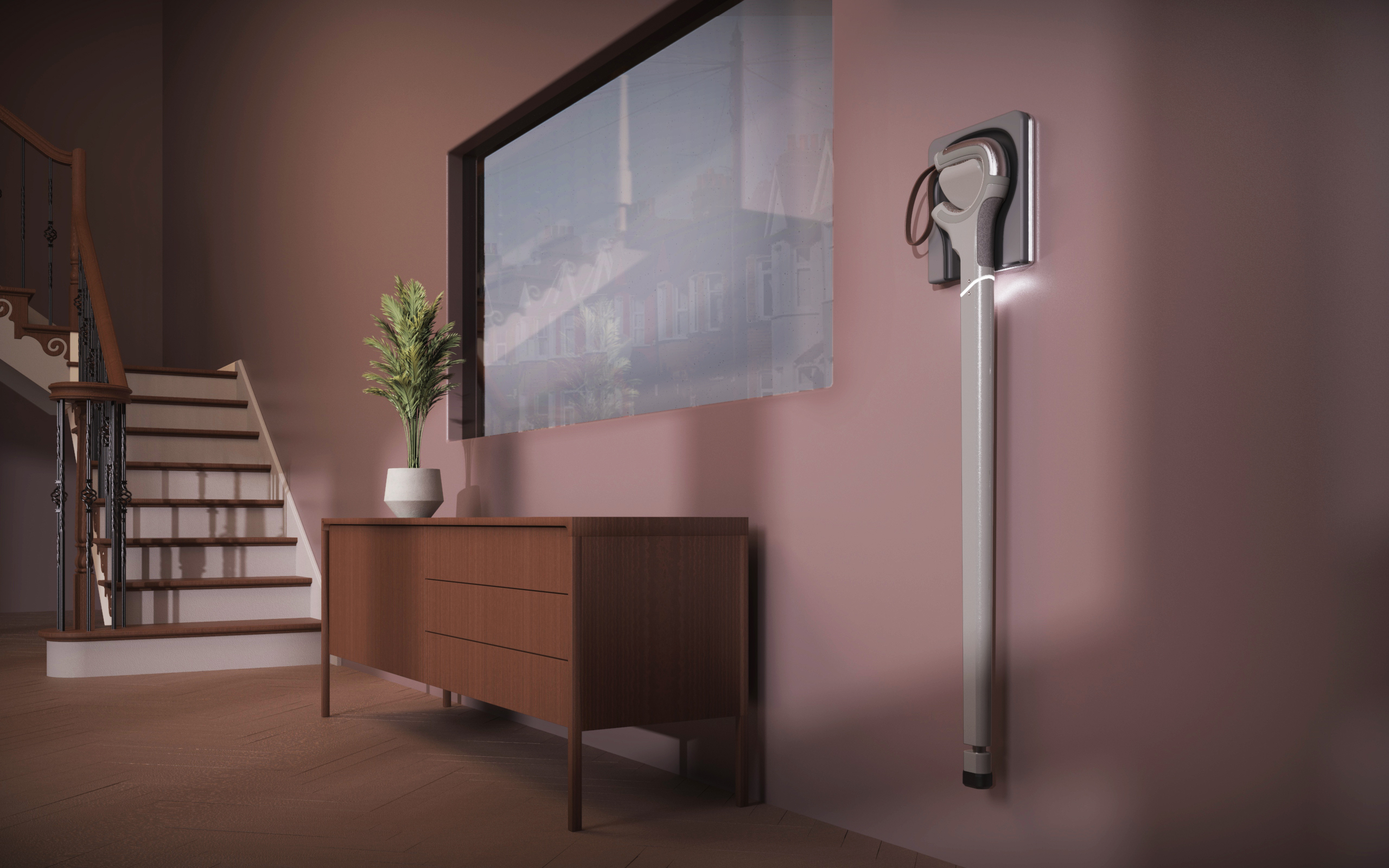

Wall mounted charging
AIDE charges on a wall-mounted wireless charger – the LED strip indicates battery level
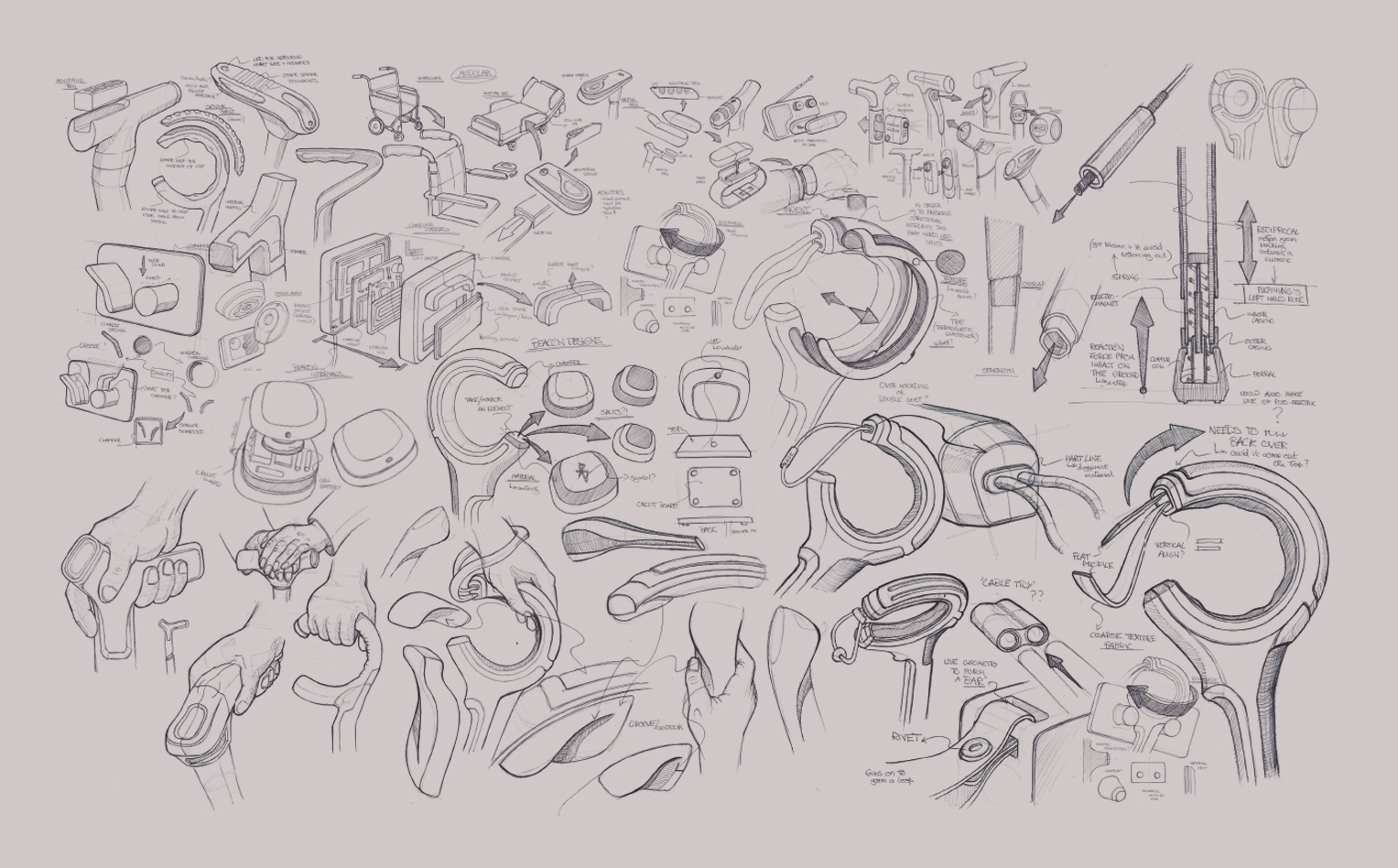

Sketch development
A primary focus throughout this project was detailing and visual balance. I spent a lot of time exploring part lines and surface transitions in order to ensure the final outcome was aesthetically refined enough to avoid drawing stigma on the user
Bayliss James
My approach to design is centred around understanding where it is appropriate to use established process and methodology, and where designerly drifting can progress a project beyond the reach of well-trodden frameworks
My final year project “Extending the period of independence that people with dementia have within their homes” is aimed at a user group that I have no connection to, and as such presented an interesting challenge in understanding the issues and pain points. Where normally I would take an ethnographic approach to research, COVID restrictions meant I had to take a more empathic approach to gather insights, pushing me to explore different media such as artwork and music created to simulate the degradation of cognitive ability that occurs as a result of dementia
Final year project
Dementia and independence
Work Experience
I completed a 6-month study exchange at TU Delft in Holland, where I was exposed to a more academic and process-based approach to design thinking on a series of masters modules - Strategic Product Innovation, Lifestyle Research, and Consumer Behaviour Theory
I spent 8 months working as an industrial design intern at INDEED INNOVATION in Hamburg where I was exposed to the pace of studio-level work and given the freedom to work on client-facing projects for companies such as Wagner and EIS. I was also given the opportunity to progress the internal knowledge of the company and was tasked with creating a Behavioural Design framework